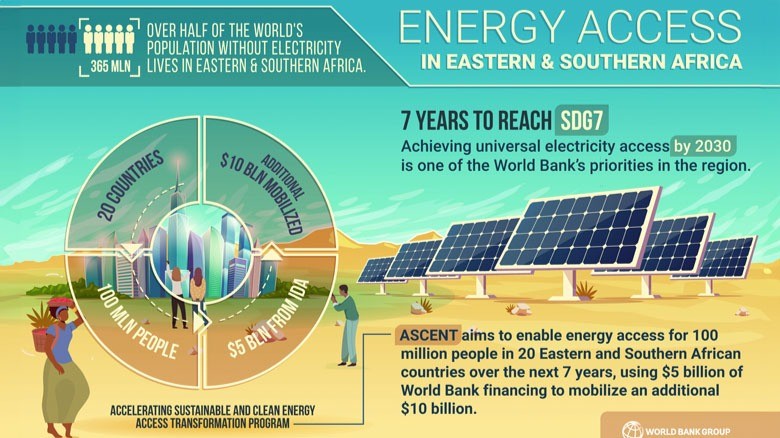
Keegan Chiyesu
Digital transformation strategist
Copperbelt University employee
January 10, 2025
Imagine a child in rural Zambia where it is impossible to study after the sun goes down because their village was covered in darkness. This is true for millions of people in sub-Saharan Africa. Energy poverty is more than a lack of electricity, it is a barrier to progress. In 2018, I experienced this first-hand during my tenure at Kapasa Makasa University in Chinsali, Muchinga Province, Mulakupikwa Village, which is not connected to the national grid. The situation forced me to rely entirely on solar energy for my home. This solution worked for me, but millions remain trapped in darkness, their dreams dimmed by energy poverty.
The Stark Reality of Energy Poverty
According to the Energy Regulatory Board (ERB) of Zambia (2025), only 25% of the Zambian population has access to electricity. The situation is worse in rural areas. With penetration levels below 5%, this energy divide is exacerbating social and economic inequalities and limiting educational opportunities in health care and economic development. The urgency of transitioning to renewable energy is further underscored by the vulnerabilities of traditional energy sources. According to the Zambezi River Authority (2025), water levels at Lake Kariba—a major source of hydropower—dropped to 475.87 meters (2.61% usable storage) in January 2025, a sharp decline from 477.28 meters (12.32%) the previous year. Such fluctuations jeopardize electricity generation, reinforcing the need to diversify energy sources through solar, wind, and other renewables.
ASCENT: A Beacon of Hope: The Accelerating Sustainable and Clean Energy Access Transformation (ASCENT) Project, was launched in June 2024 by COMESA and the World Bank, with the goal of connecting 100 million people to sustainable energy and 20 million in clean cooking energy by 2030, with initial funding of $5 billion and additional $10 billion.
ASCENT’s Project focuses on three areas:
- Regional and National Platforms – Developing digital systems to improve energy planning and operations.
- Grid Expansion – Bridging the urban-rural divide with new infrastructure.
- Distributed Renewables – Promoting off-grid solutions like solar systems and clean cooking technologies.
Recommendations for ASCENT’s Project Success
To ensure ASCENT’s impact, here are four key recommendations:
1. Develop a Comprehensive Digital Energy Monitoring System
-Implementing real-time monitoring systems powered by AI and IoT (Internet of Things) can transform the way energy is managed and distributed, ensuring efficiency and sustainability. Examples include:
-IoT-Enabled Solar Grids: Sensors in solar panels and batteries can send performance data to a centralized system. For example, if a rural micro-grid’s solar panels are underperforming due to dust accumulation or technical errors, the IoT system can set Status for immediate maintenance this reduces downtime.
-Mobile-Accessible Dashboards: Mobile-friendly monitoring dashboards can help local communities monitor energy usage and report issues. For example, a home can use a mobile app to track energy credits on a pay-as-you-go solar system. This will Improve transparency and trust in the system.
2. Leverage Big Data for Targeted Policy Decisions:
Data analytics can play a pivotal role in making informed decisions, prioritizing investments, and ensuring equitable energy access. Examples include:
-Mapping Energy Poverty Hotspots: By integrating census data with energy use models Policymakers can identify regions with the lowest energy penetration. For example, if data shows that a province has less than 5% electricity penetration, they can prioritize grid expansion or hybrid solar solutions.
-Optimizing Renewable Energy Placement: Big data analysis can include geographic information, meteorology and demographic information to determine the best location for a solar farm or wind turbine, for example, studying wind speeds over time can identify areas where wind energy will be most efficient this will help reduce project risks and increase energy yield.
3. Predictive Maintenance for Infrastructure:
Grid and renewable energy systems Data from sensors can predict potential equipment failures. This leads to timely preventative measures, for example, if a transformer’s temperature sensor detects a persistent trend of overheating. Maintenance personnel can replace worn components before they fail. This proactive approach reduces the risk of power outages and expensive repairs causing the power supply to be uninterrupted.
4. Behavioural Insights for Energy Efficiency:
Analysing energy usage patterns allows targeted campaigns to promote efficiency. For example, if data reveals high energy use for cooking due to inefficient stoves, introducing clean cooking technologies such as advanced biomass stoves. It can reduce consumption significantly. Households that use these stoves not only save energy but it also reduces greenhouse gas emissions and Improves sustainability and air quality.
From my own experience in Chinsali, ASCENT Project is more than a project. It is the promise of progress. It will empower communities by tackling energy poverty, Drive economic growth and reveal a brighter, more equitable future for Eastern and Southern Africa.



